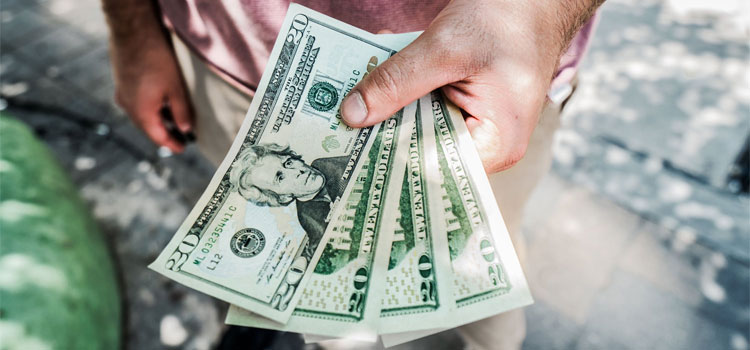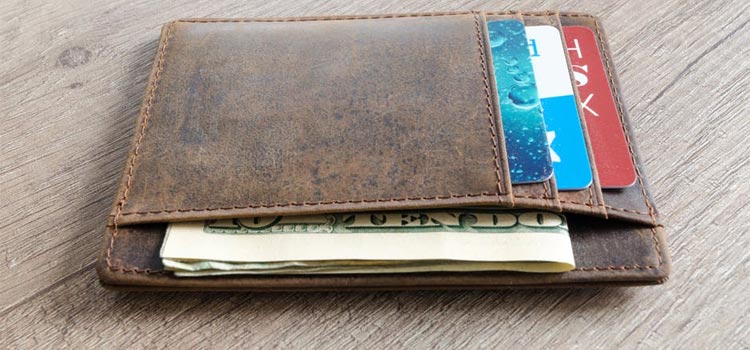Baseball card collectors know this too well: if you came into this hobby years ago to sell baseball cards in the future to make a profit, there’s a good chance your cards can get top dollar.
- Inbox Dollars - Get paid to check your email. $5 bonus just for signing up!
- Survey Junkie - The #1 survey site that doesn't suck. Short surveys, high payouts, simply the best.
- Nielsen - Download their app and get paid $50!
If you’re a long-time baseball card collector, you’ve likely spent a lot of time and money finding and collecting these baseball cards over the years.
Or, as luck would have it, you may have gotten a few baseball cards by chance; as a gift, an heirloom, or a garage sale find.
Either way, you’ve probably thought about how to sell these baseball cards so you can get some side cash from them.
Today, let’s look at how to sell baseball cards: what to consider, where to sell them, and how to maximize your profits.
Important Things to do Before You Sell Baseball Cards
Dealing in sports cards is exciting, but it’s no cakewalk.
Learning the ins and outs of the buy-and-sell world is important, especially if you have a lot of baseball cards or even collections lined up for sale.
Here are the top things you need to do before introducing your baseball cards into the market.
1. Identify and make a record of what baseball cards you have.
Selling baseball cards (or anything, really) is so much easier if you know exactly what you’re selling.
Having a catalog of what you have makes it easier for you to see the details of a particular card at a glance.
Here are the important details that you need to know for the baseball cards you have.
Print Year
Baseball cards are generally classified into four eras. Since the year a card was printed heavily influences its selling price, cards from certain eras are valued differently.
- “Pre-War” baseball cards were printed before World War II. Babe Ruth, Honus Wagner or Christy Mathewson are just some of the names dominating this category.
- “Vintage” baseball cards were printed between 1948 and 1969. Topps released many of the highest-valued cards of this era, but those printed by Bowman, Fleer and Leaf could still fetch some cash. You’d find names of Mickey Mantle and Willie Mays in-demand in this category.
- “Semi-vintage” baseball cards were printed in the 1970s. Many dealers don’t distinguish these from “vintage” cards, but baseball cards printed in this decade tend to be common and lower priced, unless one sells an entire collection or if they’re in mint condition.
- “Modern” baseball cards were printed from 1980 to present. Unlike the older baseball cards, modern ones are printed on a massive scale, so your chance of getting a lot of money from them is pretty slim. Your card does have to be extra-special to be sold for a high price. For instance, if it’s a certified autographed card, has a rare feature like a refractor or a colored border, or is a rookie card that’s autographed.
If you’re not sure how to tell what year a card was printed, look on the back at the statistics listed and look for the last year mentioned on a player’s stats. For example, if the last year on the back is 1955, then the card is from 1956.
Manufacturer
The current baseball card market is dominated by Topps, but various companies released sets of baseball cards over the years. Goudey, Bowman, and a few other smaller manufacturers have put them out.
Many baseball cards will have the copyright date and manufacturer printed on the back as well. If not, try a Google search for the player’s name and any other information printed on the card to find the manufacturer.
Player
Find out if you have any star cards; that is, if you have a baseball card of one of the greatest baseball athletes.
If you’re unsure, you can look up ESPN’s Hall of 100 or Clutchpoints’ top 50 MLB players and see if you have cards with those players.
2. Know the condition of your baseball cards.
Do your best to examine your baseball cards closely using a magnifying lens if you have to; any flaws, such as corner wear, creases, scuffs, paper and color loss, writing on the card (that’s not an autograph) and other visible marks will affect its price.
It makes sense to do this even if you’re opening a set of cards fresh out of the pack. Just because they’ve stayed in their packaging doesn’t mean they’re automatically in mint condition. Older cards were manufactured with imperfect printing processes and equipment, and they’re likely to have print defects or centering issues.
Assume that if you find even the smallest imperfections, others will, too.
No joke. Here are the fastest ways to make easy money online. Click here to see how.
3. Familiarize yourself with the grading system.
One of the most important things to know when selling baseball cards is the grading system.
Baseball card collectors often turn to third-party graders, such as
Professional Sports Authenticator (PSA), Sports Card Guarantee (SCG) and Beckett Grading Services all help collectors and dealers put a value on vintage cards and memorabilia.
Knowing how to judge your baseball cards’ condition by yourself is a great skill to have, and will save you a lot in fees for professionally inspecting and grading your cards. You can then focus on the ones that can potentially earn you more profit.
Read up on PSA Grading Standards and learn the basics.
4. Send out those baseball cards that have the most potential profit.
After you’ve gone over your collection and judged which ones you can sell at a relatively high price, weigh the costs of grading (around $15 to $20 per card for basic services) against the potential profit.
Send the ones that are potentially valuable off to professionals to have them officially graded. These tend to be worth more than ungraded or “raw” cards. Read this article on whether or not to get your cards graded to help you decide.
5. Organize and store your baseball cards.
As I’ve mentioned, the condition of your baseball cards is a huge factor in determining their price.
Invest in proper trading card sleeves for your baseball cards. Toploaders made of hard plastic are most commonly used for baseball cards, and some collectors even use a soft sleeve aside from the toploader itself.
If your baseball cards aren’t too expensive and you’d like to protect them but not spend too much, soft sleeves and pocket page protectors (the ones that can store 9 cards on a plastic binder page and has holes so you can fit them into a binder) are also good investments.
Find a secure, dark, dry, cool, and dust-free place to store your baseball cards to greatly slow down their deterioration.
6. Decide which baseball cards to sell and where to sell them.
While your cards are safely tucked away, go over your catalog and decide which cards have the most value. Choose which ones you’re willing to let go and decide where you’d like to sell these baseball cards.
6 Places to Sell Baseball Cards
Another important aspect of selling baseball cards is knowing where to sell them.
Note that all of the options below each has its own benefits and disadvantages, so choose wisely to prevent being lowballed, getting scammed, or costing you a lot in fees.
1. Card dealers and shops (in-person)
If there’s a card dealer in your local area, and you have older baseball cards to sell, selling to them is a good option.
They may have connections to more buyers, plus they may participate in events and conventions that you may not have access to, so they’re likely to be able to sell baseball cards you may not be able to sell yourself.
This is a convenient, easy way to offload baseball cards and get quick cash. However, since they are in the buy and sell business and will aim to sell your cards at a profit, you may not get the best price for your cards.
2. Online through eBay
This online marketplace is perfect for selling sports cards because you have an option of putting up a baseball card for sale with three kinds of formats:
- Fixed price via “Buy It Now” – You decide the amount you wish to sell your card and wait for someone to buy it full price.
- Auction-style – You set a minimum amount, wait for buyers to put in their “bids” and let the listing go its course. The highest bidder wins the baseball card (if the amount reaches the price you set at the beginning of the auction)
- Fixed price with “Best Offer” option – You set a fixed price when listing the baseball card for sale, but add a button that tells would-be buyers that you’re willing to consider their best offers.
3. Online through COMC.com and other similar sites
Sports card dealers nowadays can now be found online, which makes it even more convenient for you, as you can sign up to sell your baseball cards without having to leave the house.
You can make money from home and it doesn't have to be challenging. Click here to see how.
The specific process may vary, but generally, you send your baseball cards for sale to them, the online stores list them on their sites, and when someone buys your cards, you get paid.
Fees and commissions may also vary among the online stores, as well as their promotions and return policies, so it’s good practice to read up on these terms and conditions before you agree to them.
Here are some online stores where you can sell your baseball cards.
4. Sell through an auction house
Auction houses are geared toward expensive baseball collections, one-of-a-kind cards, and other valuable pieces from your collection. A good auction site values your cards as their own, which is why they’re setting up auctions for big-pocketed buyers.
The biggest benefit of going this route is the amount of marketing auctions provide.
Auction houses take care of everything from promoting to paying for a public event, shipping and handling of the cards, insurance, and so on. It does take longer to sell cards here, so you have to be a little patient.
The largest and probably the most well-known of these auction houses is PWCC Marketplace.
5. Online through Craigslist and other selling apps
You can use Craigslist to sell your baseball cards to individual buyers. They’re convenient and good if you want quick transactions. However, do prepare to haggle and research your buyers’ past purchases if you can to avoid getting scammed.
6. Online through communities of baseball card collectors
If fetching a better than usual price for your baseball cards is not a priority, join online communities of baseball card collectors and offer up your cards.
These communities already have plenty of enthusiastic buyers looking for cards to add to their collections, plus you get to compare notes about dealers and buyers and find out who is legit and who’s not.
You can find plenty of these communities on Facebook Groups, and here are some of the popular ones:
- r/baseballcards subreddit
- Sports Card Forum
- The Cardboard Connection
- Collectors Universe | Trading Cards & Memorabilia Forum
- Baseball Fever | Baseball Card Collecting & Memorabilia
How much can I earn by selling baseball cards?
Selling your baseball cards can be a quick way to make money in a day.
Unless you have a 1909-11 T206 White Border Honus Wagner baseball card lying around (this is the highest-sold card of all time at $2.8 Million and only 57 of them are known to exist), you really can’t go rich overnight selling baseball cards.
However, like other things you can sell to make money, your collection of baseball cards could get you through a rough patch, to earn extra cash for your Christmas fund, or other personal reasons.
Whether you’ve decided to just buy-and-sell now (or decades ago), flipping baseball cards is something you might want to try.
Are you a long-time baseball card collector looking to sell? Or maybe you just decided to start flipping baseball cards today? Tell us in the comments!






